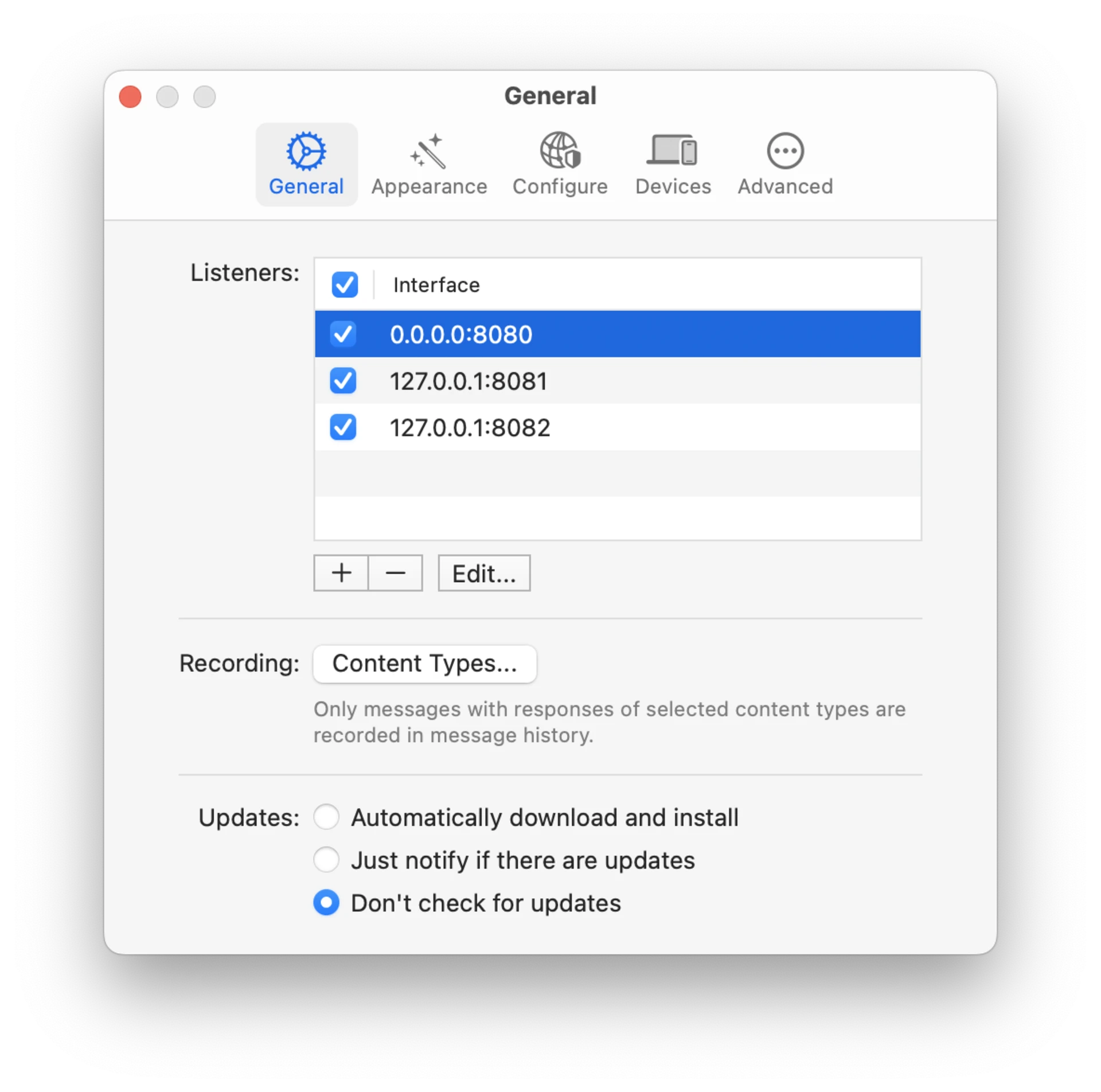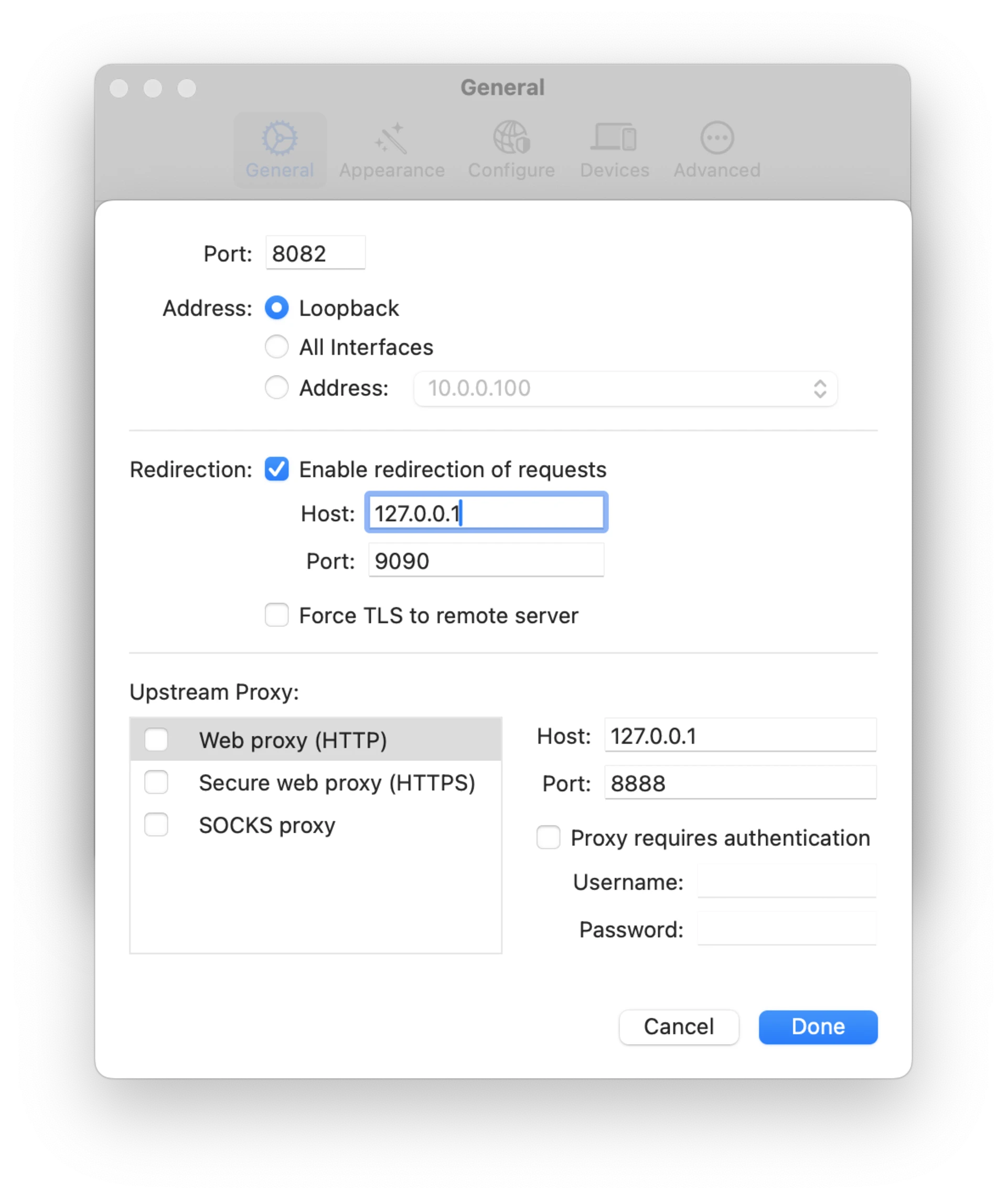Listener Options
Set up proxy listeners with custom options.
Proxy listeners are what receive traffic to the HTTP proxy. You can set up multiple listeners each with its own configuration. This makes it possible to direct traffic from different applications to their own destination.
By default Proxygen has one listener configured at address 127.0.0.1:8080.

Listeners are enabled using the toggle in the main window. Individual listeners that you don’t wish to use can be disabled using the checkbox in the Listeners list.
Each listener has its own configuration that can be accessed by clicking Edit or pressing enter in the listeners list.
Configuration
Address and port
Every listener binds to a network interface and a port. Note that each listener should have a different port, otherwise some of the listeners can’t be started.
Address let you select between
- Loopback or 127.0.0.1 which means the listener is only accessible from the same host. This is a good default choice.
- All Interfaces means the listener is bound to all network interfaces on your host. Use this option if you want to access the listener using loopback address on the same computer but also access it from local network.
- Address allows you to select a specific network interface to bind to.

Redirection
Select Enable redirection of requests to send all requests received by this listener to some other server address. The requests will be sent to the address defined in host and port fields. Note that this option will override the original destination of all requests received by the listener and should by used carefully. You may need to control specifically what network traffic gets sent to this listener.
Use Force TLS to remote server when you know that the redirection destination only allows TLS connections. This is useful when you need to modify a client app to connect to its server APIs using encrypted HTTP instead of HTTPS in order to inspect its network traffic but the connections to the API still need to use HTTPS.
Upstream proxy
It may be necessary to set up an upstream proxy when direct connections to the target network are not possible without going through a proxy. This is often the case with enterprise networks. All requests received by this listener will be sent to their destination via another proxy that you configure here. Proxygen supports HTTP, HTTPS and SOCKS proxies for this purpose.